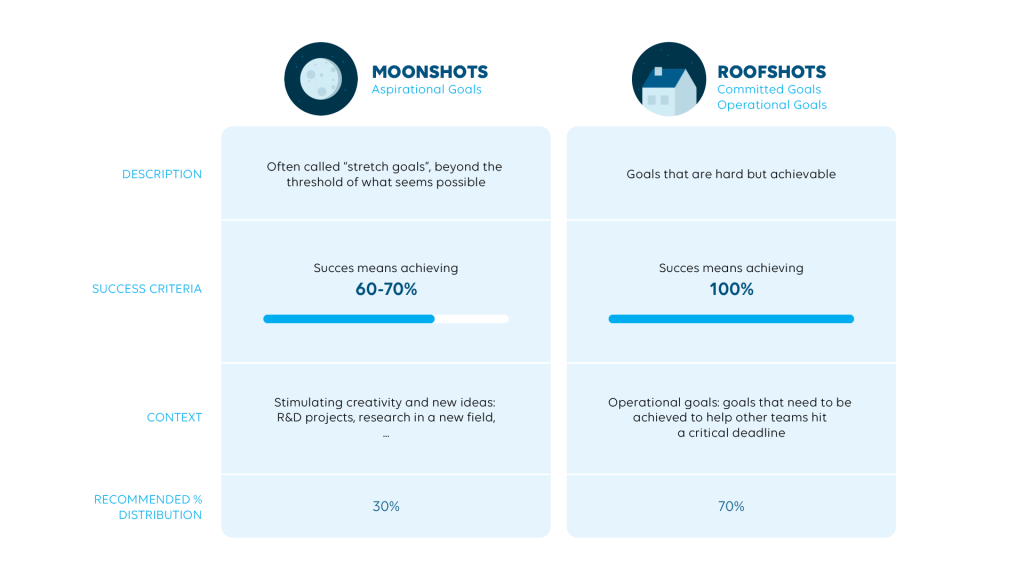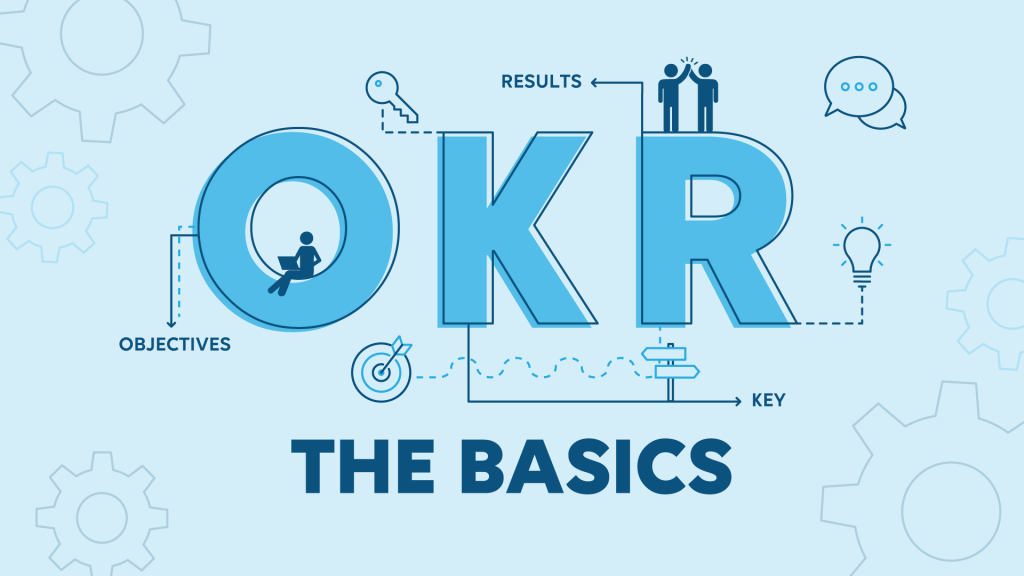At the heart of the OKR framework lies continuous improvement. It is all about improving yourself, your team, and your organization. And it’s a continuous process, not a one-time project. But did you know a distinction can be made between two types of OKRs? Both serve different purposes and have diverse ways they can be read, interpreted, and acted upon. So, what are they and how do they differ?

Roofshots or committed OKRs
“Roofshot OKRs” are also called “committed OKRs”. As their success is based on a 100% completion rate, teams are fully committed to reaching them.
In other words, they’re attainable. But that doesn’t mean they should be easy! Keep in mind that every type of OKR is aimed at bringing about change and improvement. There’s no use in wasting time on OKRs that won’t deliver on that promise of change.
Roofshot OKRs are typically aimed at improving day-to-day operations and are therefore often called “operational goals“. This makes them very tangible and easier to describe—which is crucial for proper alignment and engagement across all teams.
When you grade a roofshot, the expected score for success is 100%. A score below 100% would require thorough discussion as it shows an opportunity to adjust or improve the planning or execution.
Moonshots or aspirational OKRs
Aspirational OKRs go to the heart of the real power of an OKR-driven operation. They are moonshot goals, i.e. goals that seem virtually impossible to achieve. They should force you to go out of your comfort zone and make you and your team rethink how you work.
One of the pitfalls you should be wary of when implementing moonshots is that they are quite visionary and far-fetched, which may sometimes lead to a lack of alignment or engagement.
That being said, moonshots are crucial! They are meant to be provocative and challenge everybody involved to reach peak performance, rising above their standard. And that’s exactly the point at which true innovation is possible. In “Measure What Matters”, Larry Page said: “If you set crazy, ambitious goals and miss them, you’ll still achieve something remarkable.” Indeed, the main purpose of these aspirational OKRs is to push boundaries, encourage you to rethink your work, and stimulate creativity and new ideas.
If you set crazy, ambitious goals and miss them, you’ll still achieve something remarkable.
Larry Page, “Measure What Matters”
Moonshots are also called “stretch” goals and can be compared with “stretching” in gymnastics. At first, you will have a hard time reaching any further than your knees. But if you keep on trying, over time, you will be able to reach lower and lower until you finally reach the floor. It’s all about dedication and persistence.
When you grade an aspirational OKR, the expected score will be around 60-70%, with a lot of room for variance. 100% should be exceptionally rare. In fact, if 100% is achieved, the target was probably not set high enough. Then again, 60 should not become the new 100 either. Instead, as Larry Page suggests, aim for the moon … and you may end up among the stars!
Not if-if, but and-and
Don’t be fooled. Moonshots may sound more precious or valuable than roofshots, but they’re not. Both types of OKRs are necessary to ensure a durable culture of change in your organization, but not in the same quantity!
When it comes to implementing moonshots, it’s important not to overdo—or underdo—it. They take a lot of time and effort and should therefore be chosen very wisely. As a rule of thumb, you should aim for a 70-30 distribution: 70% of your goals should be roofshots, which help you, your team, and your organization to regularly achieve small yet valuable successes, while 30% of your goals should be aimed at the moon.
Discover the complete blog series on OKRs

BLOG | OKRs
PART 1 – Introduction to the basic concepts
Let’s deep dive into the basics of OKRs: what they are and how you can implement them

BLOG | OKRs
PART 2 – The benefits of OKRs: F.A.C.T.S.
What can OKRs bring to a company, a team, and you as an individual? Let’s talk F.A.C.T.S.

BLOG | OKRs
PART 3 – OKR cycle – plan, evaluate, adapt, repeat
Learn how to correctly implement the 4 phases of the OKR cycle
Hugely insightful! Thank you!
To the moon!